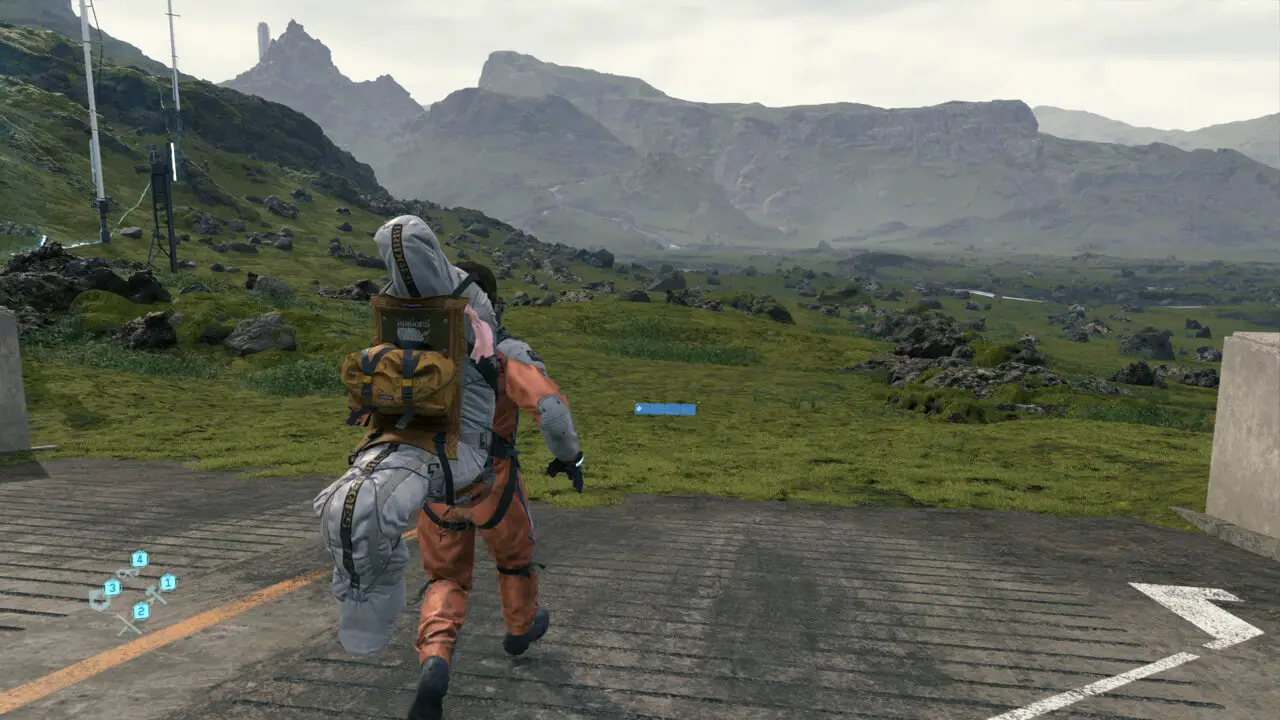Death Stranding in the benchmark test – ComputerBase
: Test |CUP | Specs |Config
tl;dr: After nine months of PS4 exclusivity, Death Stranding is now also available for PC. The title exclusively uses DirectX 12 with feature level 12_0 and supports Nvidia DLSS 2.0 and AMD FidelityFX. In the extensive benchmark test, ComputerBase looked at both technologies and many other aspects.
Update 07/17/2020 10:58 a.m.
With DirectX 12 FL 12_0, DLSS 2.0 and FidelityFX
Opinions have been divided on Death Stranding since it was released on PS4. Some consider the unusual action game by Kojima Productions to be awesome, while others consider it simply boring. Now PC gamers without access to a PlayStation also get the chance to find out their attitude towards the title.
Death Stranding uses an enhanced version of the Decima engine originally developed by Guerrilla Games for Killzone Shadow Fall. With Death Stranding, Decima celebrates the premiere on the PC. The developers have chosen DirectX 12 exclusively as the API. Feature level 12_0 of the low-level API is also used, so that AMD’s first GCN generation, such as the Radeon HD 7970 or the Radeon R9 270X, is left out. It can handle DirectX 12 on the driver level, but not on the hardware level.
Graphically, the PC and console versions of Death Stranding are almost identical. The character representation of the game continues to stand out positively and the weather effects are also pleasing. The landscape representation and that of many buildings, on the other hand, does not go beyond the predicate mediocrity, and there is often poor anisotropic texture filtering. Overall, Death Stranding on the PC is only an optically average game, which at least doesn’t lack a few highlights.
On the PC with DLSS 2.0, but without ray tracing
DXR ray tracing and Nvidia’s AI upsampling DLSS usually went hand in hand. Death Stranding is an exception and dispenses with ray tracing, while DLSS in the current version 2.0 is on board. According to the developer and Nvidia, DLSS 2.0 should ensure that 60 FPS are possible in high resolutions apart from the high-end models – with graphics quality that is absolutely comparable to the native resolution. In addition to the usual benchmarks for a technology test, the article also focuses on DLSS 2.0.
With an AMD graphics card or a GeForce apart from the RTX model series, DLSS does not work, but AMD’s FidelityFX, which has also made it into the game as an upsampling variant. The goal (rendering in lower resolution without loss of quality) is the same as with DLSS, but the way to get there is completely different. The direct comparison of the two technologies is also a focus of the test.
The PC version of Death Stranding has a stylish, but not too comfortable graphics menu. There are only a few convenience functions, and sample screenshots are also missing. The descriptions of the individual options are not very helpful. At least there is an FPS limiter that can be set to 30 FPS, 60 FPS, 120 FPS, 144 FPS and 240 FPS, but cannot be turned off. There is no in-game up- or down-sampling (or only very indirectly through DLSS and FidelityFX), no dynamic resolution or other options.
Death Stranding’s graphics menu
picture 1 from 4
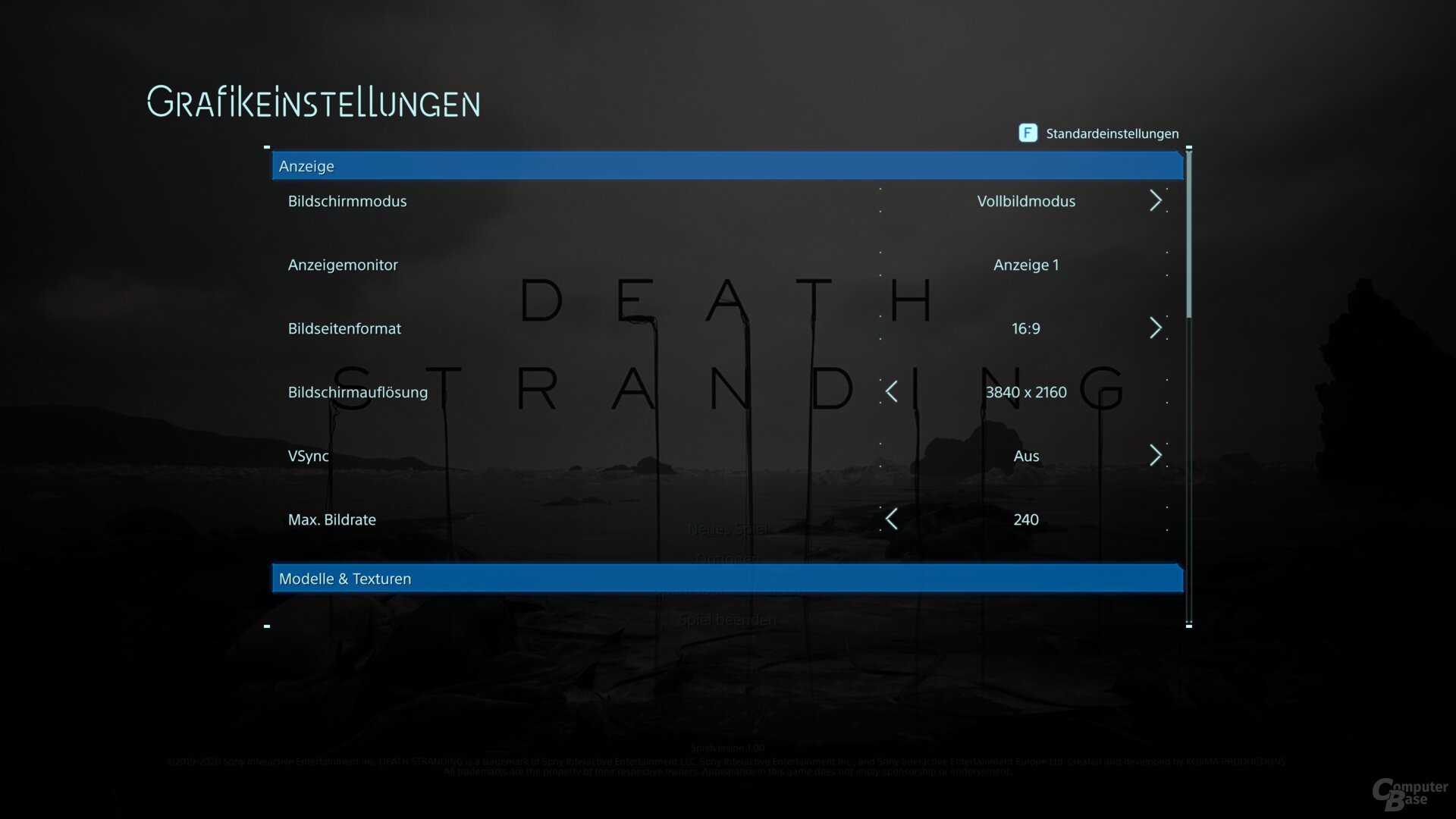
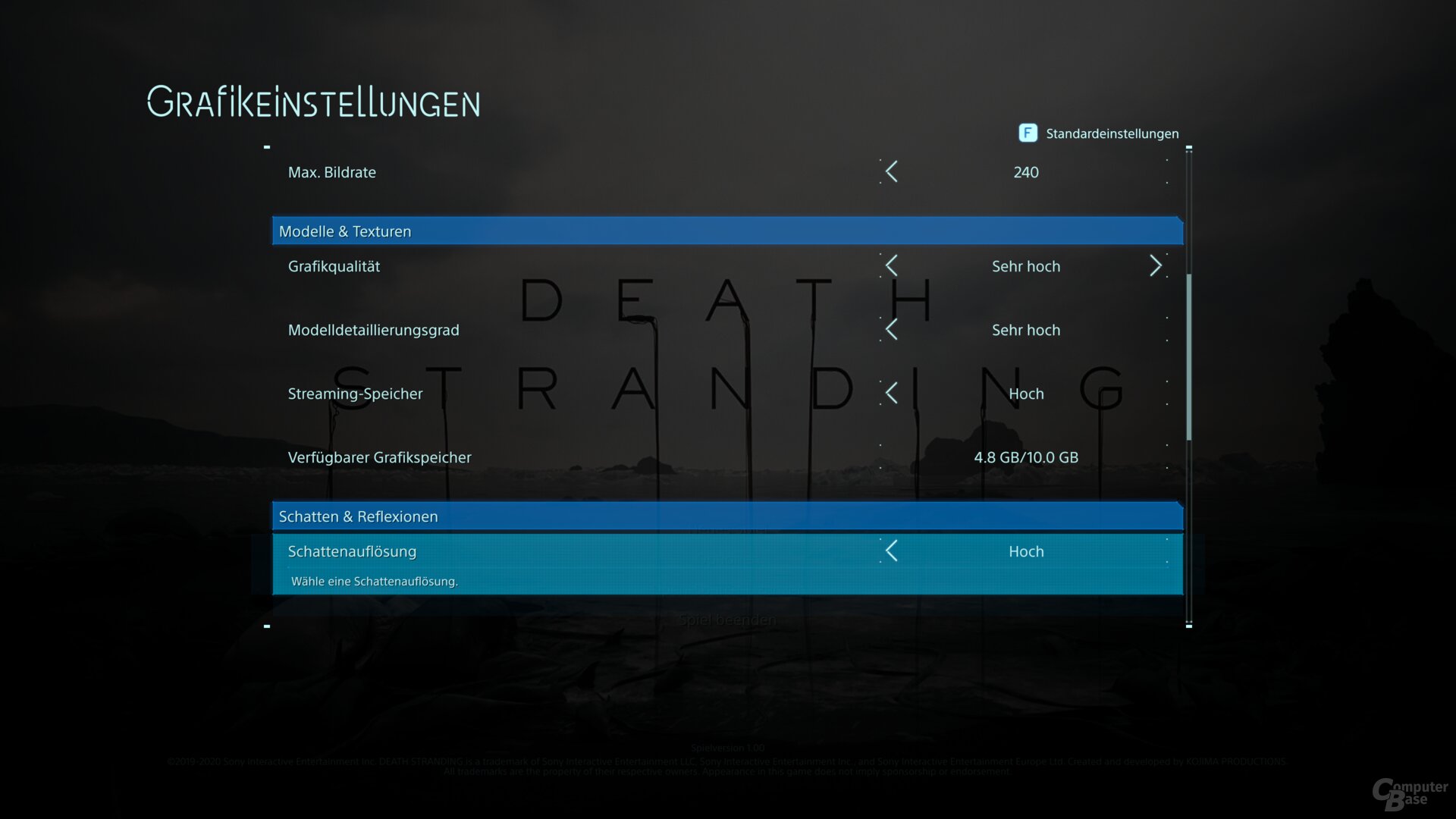
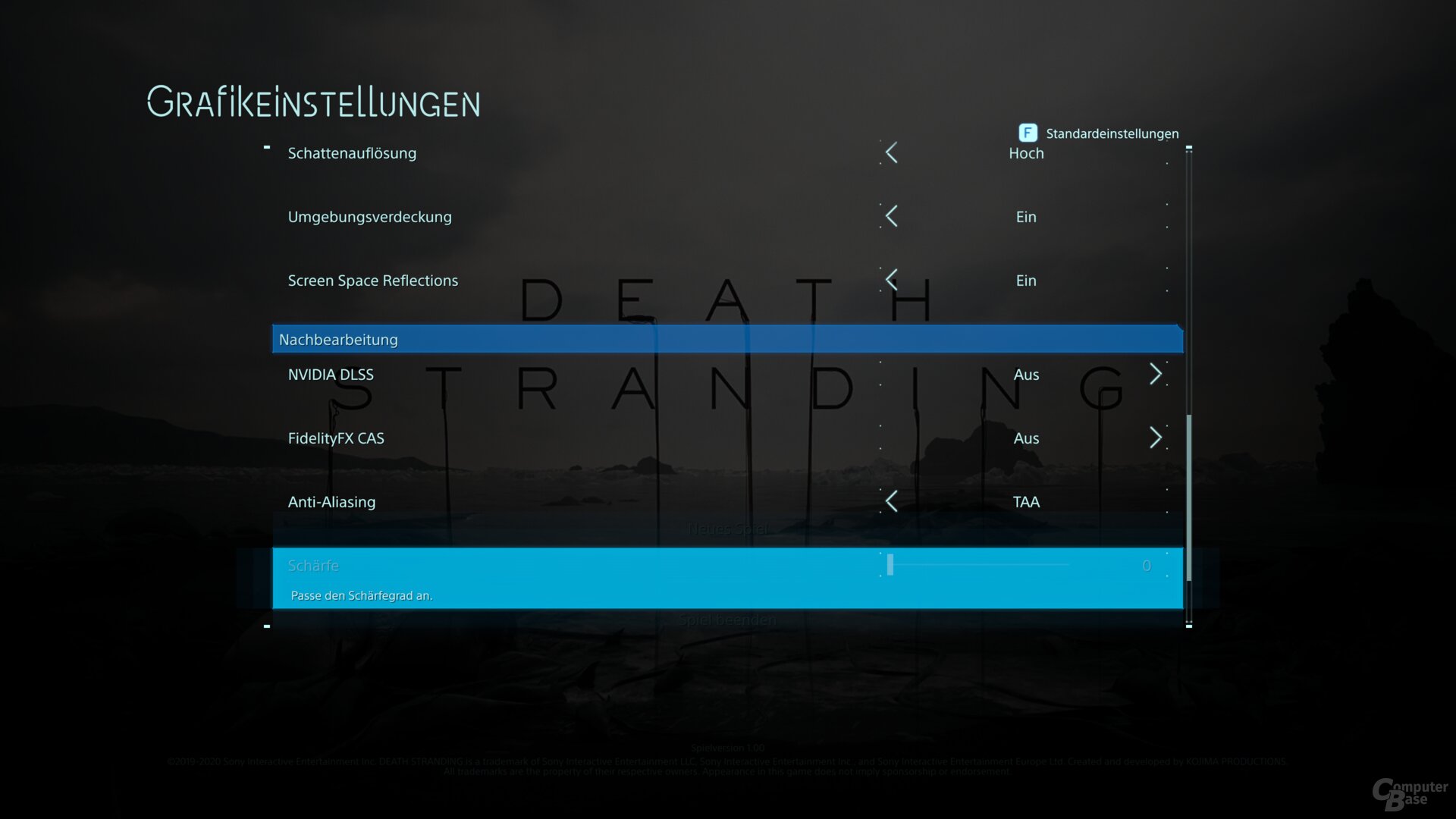
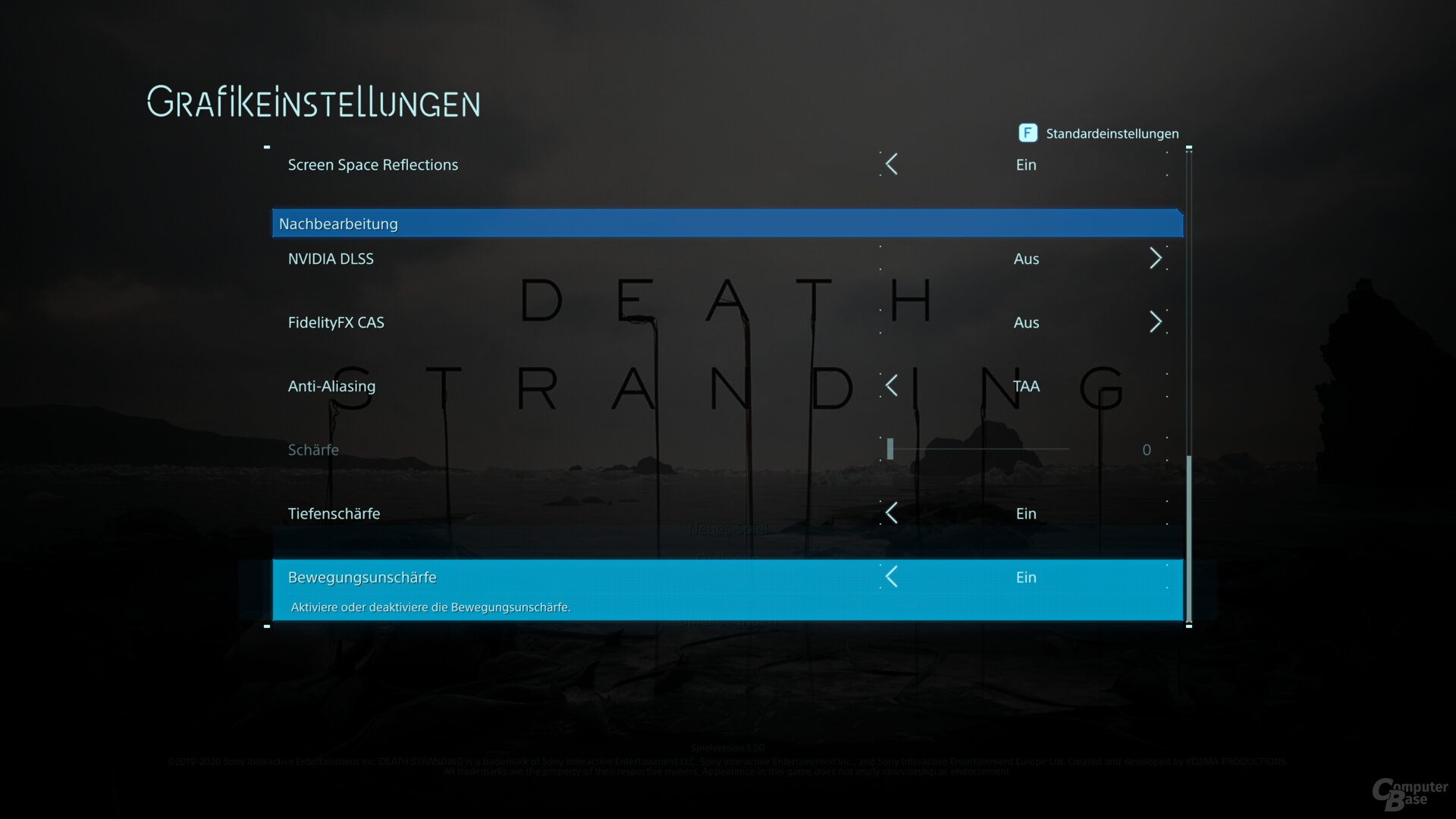
4 graphic presets with minor differences
Death Stranding offers four different graphic presets with “Low”, “Medium”, “Standard” and “Very High”. Very high corresponds to the maximum possible details. According to the developer, if you switch back from Very High to Standard, you will get the console graphics quality. The differences to Very High are very small: Only the LOD is less aggressive on Very High, so that objects pop into the image less visibly. However, that is still the case.
Those who reduce to the medium setting are making even bigger cuts in the LOD. In addition, the anti-aliasing works less effectively and the tessellation factors are apparently reduced. Low, the anti-aliasing finally switches off, the surrounding obscuration is missing, tessellation is reduced again and the same applies to the LOD, so that some objects no longer show any details from a medium distance.
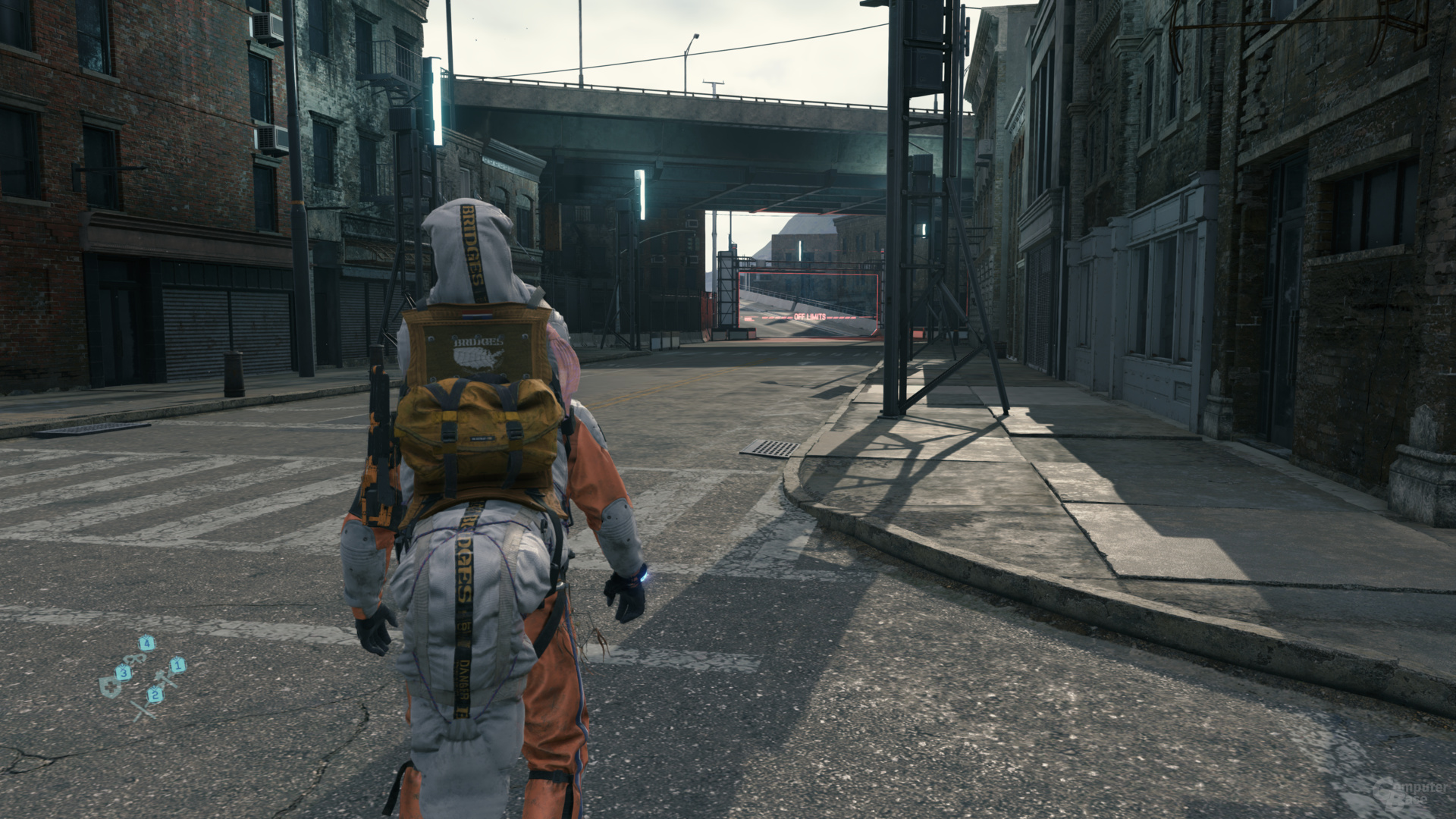
Very high preset
picture 1 from 8
The FPS gains are small
Should players accept the graphic cuts? Only in an extreme emergency, because with the graphic presets in Death Stranding hardly any performance can be gained. The standard preset (PS4 quality) accelerates a GeForce RTX 2070 Super compared to Very High by an imperceptible 2 percent, the Radeon RX 5700 XT comes to 3 percent. The middle setting then brings a slightly larger plus of 9 or 8 percent, the low preset brings another 8 percent more FPS. Overall, the performance gains therefore remain small.
Graphics presets – 3,840 × 2,160
Low preset
Medium preset
Original-Preset
Very high preset
Low preset
Medium preset
Original-Preset
Very high preset
Effective anti-aliasing with a decent amount of blurring
The post-processing variants FXAA and TAA are available for smoothing edges. TAA is the mode of choice because it smooths the image much better. Even in Full HD, the image is still very quiet, but at the same time there is a good amount of blurring over the image. In Full HD it is intensely pronounced, in WQHD it is much more restrained, but does not disappear entirely in Ultra HD either. Resharpening would be helpful there, but this is not possible in the game itself – FidelityFX does sharpen, but not without reducing the resolution at the same time.
On the next page: GPU and CPU benchmarks as well as frame times





